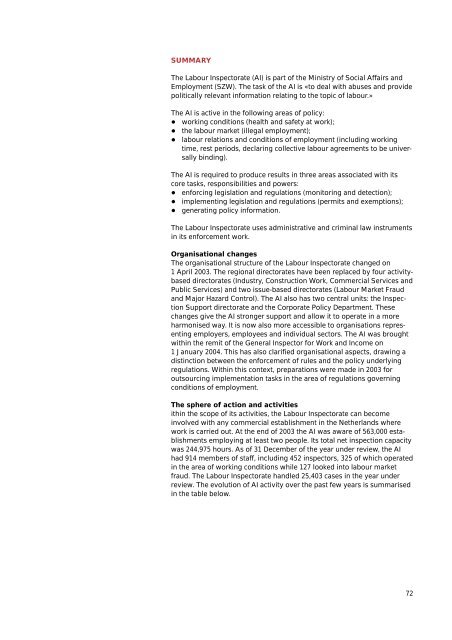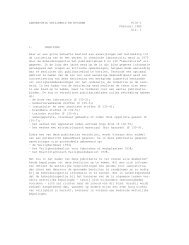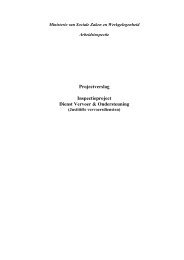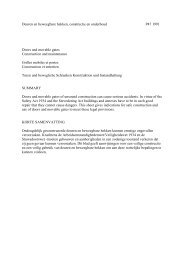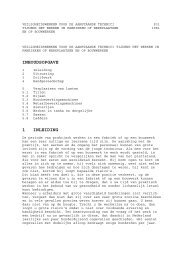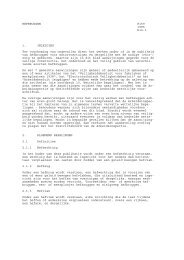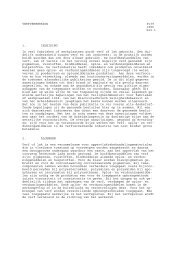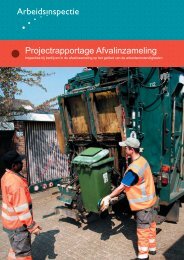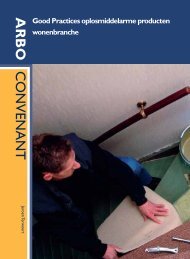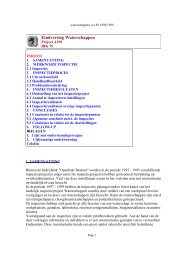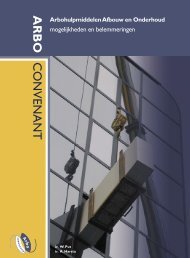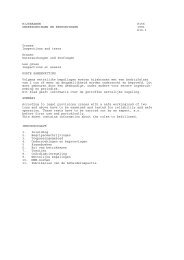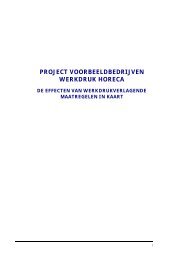Jaarverslag 2003 - Databank Milieu
Jaarverslag 2003 - Databank Milieu
Jaarverslag 2003 - Databank Milieu
You also want an ePaper? Increase the reach of your titles
YUMPU automatically turns print PDFs into web optimized ePapers that Google loves.
SUMMARY<br />
The Labour Inspectorate (AI) is part of the Ministry of Social Affairs and<br />
Employment (SZW). The task of the AI is «to deal with abuses and provide<br />
politically relevant information relating to the topic of labour.»<br />
The AI is active in the following areas of policy:<br />
+ working conditions (health and safety at work);<br />
+ the labour market (illegal employment);<br />
+ labour relations and conditions of employment (including working<br />
time, rest periods, declaring collective labour agreements to be universally<br />
binding).<br />
The AI is required to produce results in three areas associated with its<br />
core tasks, responsibilities and powers:<br />
+ enforcing legislation and regulations (monitoring and detection);<br />
+ implementing legislation and regulations (permits and exemptions);<br />
+ generating policy information.<br />
The Labour Inspectorate uses administrative and criminal law instruments<br />
in its enforcement work.<br />
Organisational changes<br />
The organisational structure of the Labour Inspectorate changed on<br />
1 April <strong>2003</strong>. The regional directorates have been replaced by four activitybased<br />
directorates (Industry, Construction Work, Commercial Services and<br />
Public Services) and two issue-based directorates (Labour Market Fraud<br />
and Major Hazard Control). The AI also has two central units: the Inspection<br />
Support directorate and the Corporate Policy Department. These<br />
changes give the AI stronger support and allow it to operate in a more<br />
harmonised way. It is now also more accessible to organisations representing<br />
employers, employees and individual sectors. The AI was brought<br />
within the remit of the General Inspector for Work and Income on<br />
1 January 2004. This has also clarified organisational aspects, drawing a<br />
distinction between the enforcement of rules and the policy underlying<br />
regulations. Within this context, preparations were made in <strong>2003</strong> for<br />
outsourcing implementation tasks in the area of regulations governing<br />
conditions of employment.<br />
The sphere of action and activities<br />
ithin the scope of its activities, the Labour Inspectorate can become<br />
involved with any commercial establishment in the Netherlands where<br />
work is carried out. At the end of <strong>2003</strong> the AI was aware of 563,000 establishments<br />
employing at least two people. Its total net inspection capacity<br />
was 244,975 hours. As of 31 December of the year under review, the AI<br />
had 914 members of staff, including 452 inspectors, 325 of which operated<br />
in the area of working conditions while 127 looked into labour market<br />
fraud. The Labour Inspectorate handled 25,403 cases in the year under<br />
review. The evolution of AI activity over the past few years is summarised<br />
in the table below.<br />
72


